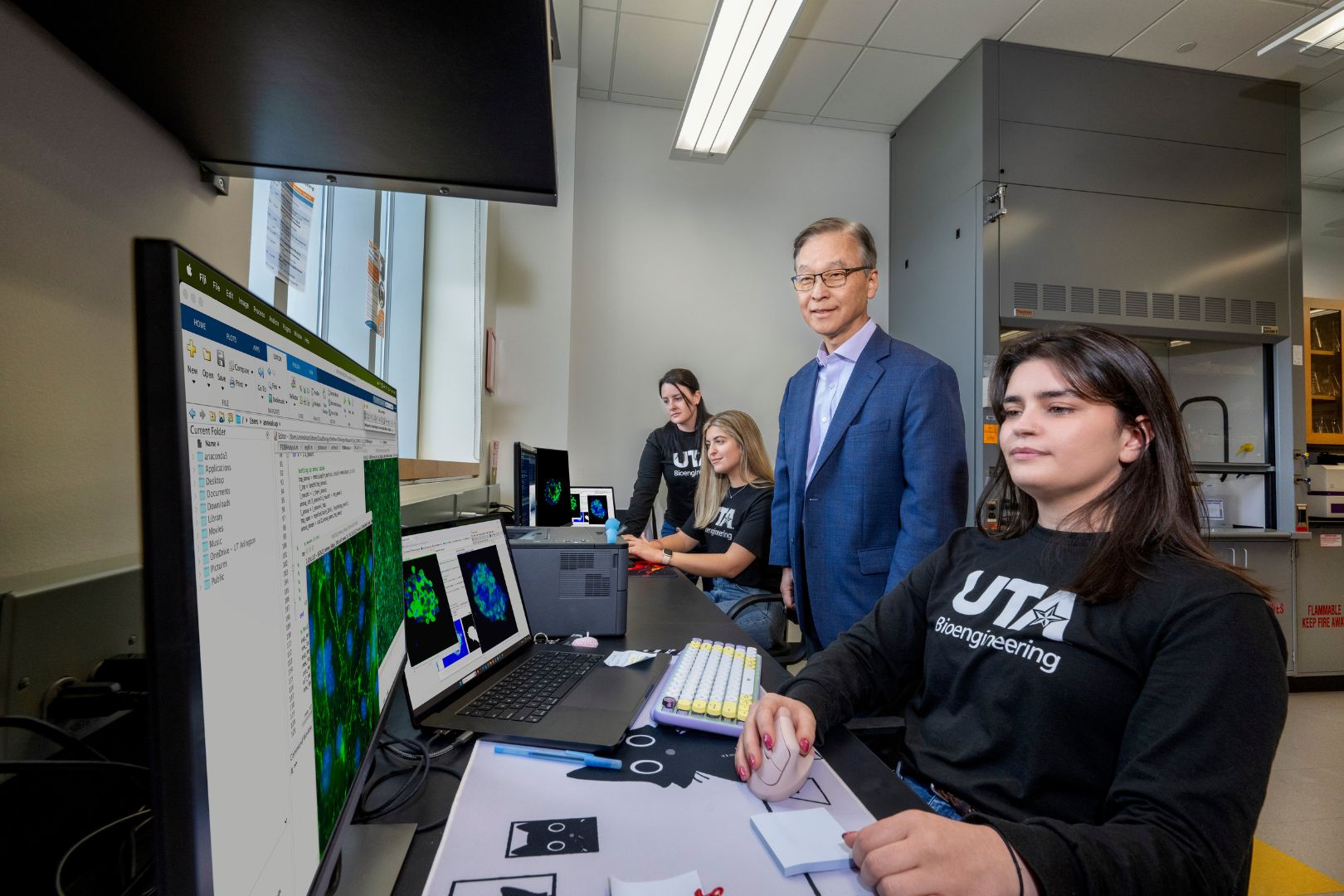UTA and UTD presidents: University research is essential. Don’t defund it
By Jennifer Cowley, president of the University of Texas at Arlington, and Richard C. Benson, president of the University of Texas at Dallas, for The Dallas Morning News.
University researchers throughout the Dallas-Fort Worth region are doing amazing work. At the University of Texas at Arlington and the University of Texas at Dallas, scholars play hidden roles in the cars we drive, the bridges we cross, and the medications that keep us healthy.
Behind just about every major technology breakthrough or industry transformation, there’s often a university professor working to create the latest innovation. Many of them work on our campuses, and continued investment in their research is essential to growing our region’s role in addressing the problems faced by Americans.
One researcher, UT Arlington analytical chemist Daniel W. Armstrong, has spent much of his professional career exploring the arrangements of atoms in molecules. This may seem esoteric, until you learn that roughly 75% of oral prescription medications are safer in part because of Armstrong.
Inspired by Armstrong’s work, the Food and Drug Administration in the 1990s instructed pharmaceutical companies to focus on using only the “helpful” arrangement of molecules in drugs to avoid side effects. You are safer and healthier today because of this professor’s determined research.
Similarly, UT Dallas professors Michael Kilgard, Robert Rennaker and Seth Hays conceived a therapy called paired vagus nerve stimulation to rewire circuits in the brain. These scientists have since refined the technique to treat a variety of disorders, including stroke.
Four years ago, the U.S. Food and Drug Administration approved the treatment for chronic ischemic stroke survivors. For such survivors, increasing the effectiveness of physical rehabilitation for mobility and motor skills provides hope for a better quality of life.
Funding from the National Institutes of Health and additional federal government entities made these and other innovations possible at our universities. Federal research funding plays a leading role in biomedical innovation, technology and even our everyday health.
Between our two universities, we spent more than $110 million in the local economy last year on federal grants and contracts, money received only following national, highly competitive, peer-review applications. That funding translates into discoveries that lead to new products and jobs that benefit the United States.
We serve as presidents of two of D-FW’s Carnegie R1 universities, a designation signifying the highest level of research activity and achieved by less than 5% of all universities nationwide. As such, we lead teams of professors, scholars, scientists and student researchers whose work has helped propel our country’s rising standard of living, consistent economic growth, and technological and military superiority.
A recent paper published by the Federal Reserve Bank of Dallas found that government investments in research and development accounted for at least a fifth of U.S. productivity growth since World War II, with implied returns of 150% to 300% for non-defense-related research funding.
Since World War II, federal investment has funded the curiosity and ingenuity of academic institutions. In turn, universities have provided the expertise and research capacity to tackle complex challenges, including building the next generation of energy storage, advancing artificial intelligence and improving health care.
This model has served as the heartbeat of American innovation and a key driver of our nation’s prosperity, security and standard of living.
Our ongoing research funding partnership with the federal government will ensure that innovative discoveries continue to improve the lives of Americans and people all over the world.